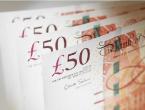EUR/USD
1.16357
-0.139%
Gold
3958.83
0.155%
Oil
59.923
-0.152%
USD/JPY
152.038
-0.043%
GBP/USD
1.32516
-0.142%
GBP/JPY
201.480
-0.168%
The Indian government stated that India and the EU believe that issues related to steel, automobiles, carbon border adjustment mechanisms, and EU regulations are highly sensitive and require further discussion.Futures News, October 29th. Economies.com analysts latest view today: WTI crude oil futures saw gains in the past trading day. This follows a significant downward trend in oil prices, which have consistently tested interim lows to establish new support, creating conditions for a resumption of upward momentum. Oil prices are currently stabilizing above the EMA50, reinforcing the stability of the dominant short-term bullish corrective trend. The relative strength index (RSI) is beginning to signal positive activity after reaching oversold territory, suggesting the recent technical rebound is likely to continue as long as prices can hold above existing support levels.Economists at the Commonwealth Bank of Australia (CBA) believe that the Reserve Bank of Australia will not cut interest rates further and that rates will remain at 3.6% for an extended period.October 29th, Futures.com analysts latest view: International spot gold rose in the previous trading day, mainly due to its stabilization at the strong support level of $3950. This support provided temporary bullish momentum to the market, helping gold prices recover some of the previous losses. At the same time, the Relative Strength Index (RSI) released positive signals, further driving this minor technical correction. Despite the rebound, the RSI has entered overbought territory, diverging from the price increase, indicating that the current bullish momentum is weakening. This phenomenon confirms that the short-term bearish correction trend still dominates, especially considering that gold prices have remained below the 50-day exponential moving average (EMA50) and have consistently been constrained by a steep descending trendline, indicating that negative pressure will continue.On October 29th, thanks to the strong market performance of Apples iPhone 17 series, TSMC is experiencing a new surge in orders for its advanced process technology, with a surge in orders for 3nm chips. MediaTek and Qualcomms flagship chips, the fifth-generation Snapdragon 8 Ultra and Dimensity 9500, are also manufactured using TSMCs 3nm lithography technology. Researchers noted that TSMCs continued strong 3nm order momentum is also expected to boost capacity utilization in its 6/7nm process, which had previously seen relatively weak orders.










